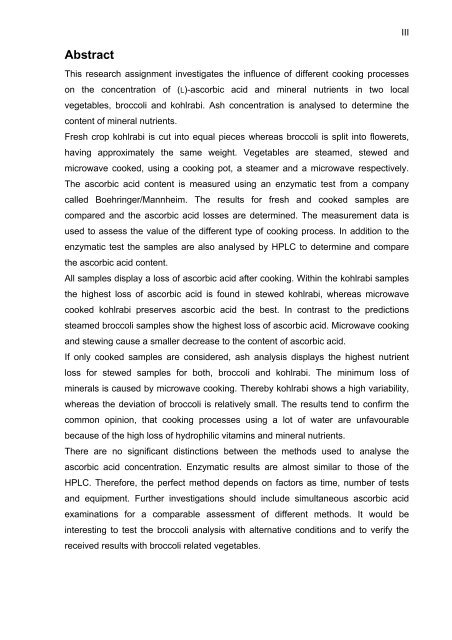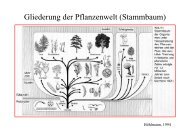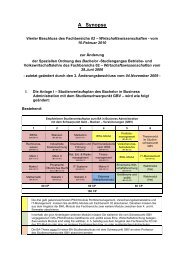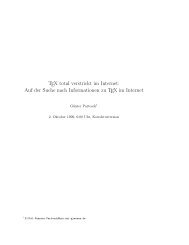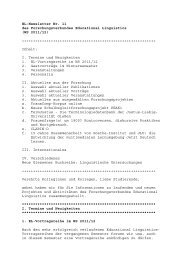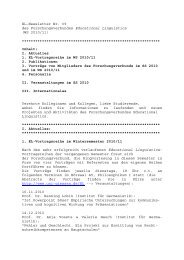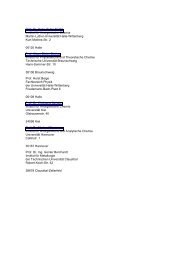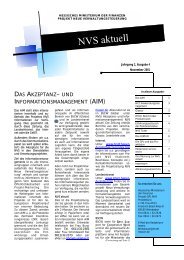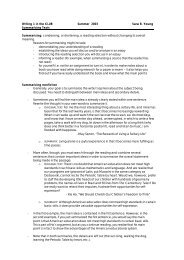Kurzfassung - Justus-Liebig-Universität Gießen
Kurzfassung - Justus-Liebig-Universität Gießen
Kurzfassung - Justus-Liebig-Universität Gießen
Sie wollen auch ein ePaper? Erhöhen Sie die Reichweite Ihrer Titel.
YUMPU macht aus Druck-PDFs automatisch weboptimierte ePaper, die Google liebt.
Abstract<br />
This research assignment investigates the influence of different cooking processes<br />
on the concentration of (L)-ascorbic acid and mineral nutrients in two local<br />
vegetables, broccoli and kohlrabi. Ash concentration is analysed to determine the<br />
content of mineral nutrients.<br />
Fresh crop kohlrabi is cut into equal pieces whereas broccoli is split into flowerets,<br />
having approximately the same weight. Vegetables are steamed, stewed and<br />
microwave cooked, using a cooking pot, a steamer and a microwave respectively.<br />
The ascorbic acid content is measured using an enzymatic test from a company<br />
called Boehringer/Mannheim. The results for fresh and cooked samples are<br />
compared and the ascorbic acid losses are determined. The measurement data is<br />
used to assess the value of the different type of cooking process. In addition to the<br />
enzymatic test the samples are also analysed by HPLC to determine and compare<br />
the ascorbic acid content.<br />
All samples display a loss of ascorbic acid after cooking. Within the kohlrabi samples<br />
the highest loss of ascorbic acid is found in stewed kohlrabi, whereas microwave<br />
cooked kohlrabi preserves ascorbic acid the best. In contrast to the predictions<br />
steamed broccoli samples show the highest loss of ascorbic acid. Microwave cooking<br />
and stewing cause a smaller decrease to the content of ascorbic acid.<br />
If only cooked samples are considered, ash analysis displays the highest nutrient<br />
loss for stewed samples for both, broccoli and kohlrabi. The minimum loss of<br />
minerals is caused by microwave cooking. Thereby kohlrabi shows a high variability,<br />
whereas the deviation of broccoli is relatively small. The results tend to confirm the<br />
common opinion, that cooking processes using a lot of water are unfavourable<br />
because of the high loss of hydrophilic vitamins and mineral nutrients.<br />
There are no significant distinctions between the methods used to analyse the<br />
ascorbic acid concentration. Enzymatic results are almost similar to those of the<br />
HPLC. Therefore, the perfect method depends on factors as time, number of tests<br />
and equipment. Further investigations should include simultaneous ascorbic acid<br />
examinations for a comparable assessment of different methods. It would be<br />
interesting to test the broccoli analysis with alternative conditions and to verify the<br />
received results with broccoli related vegetables.<br />
III


